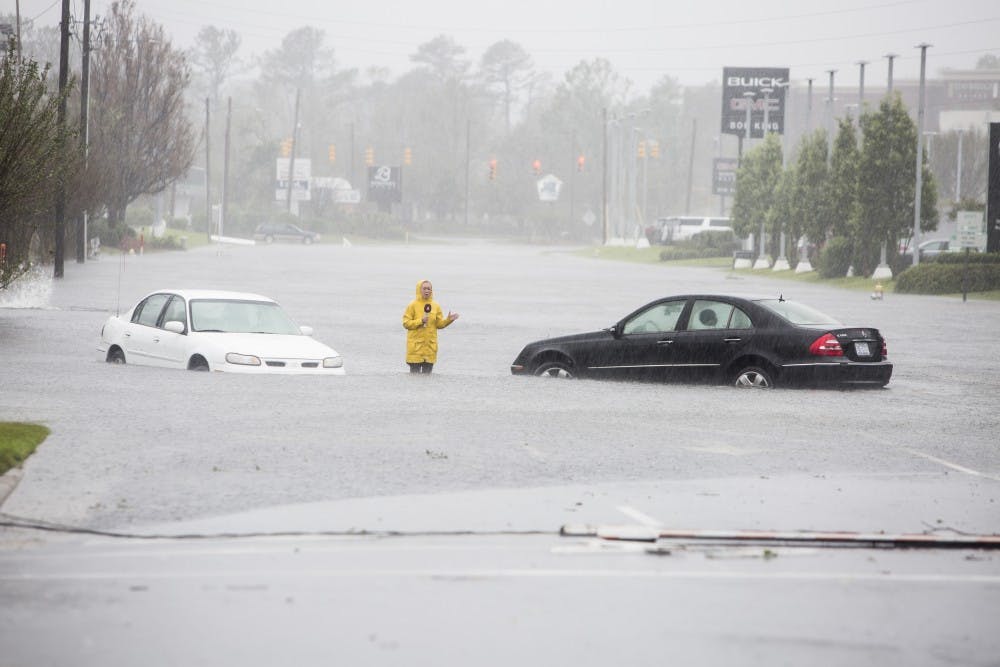While the remnants of Hurricane Florence have moved beyond North Carolina, communities across the state are still dealing with flooding following days of rain.
There have been 27 confirmed deaths in North Carolina as the state still copes with the disastrous effects of Hurricane Florence.
In a Monday afternoon briefing, Gov. Roy Cooper urged North Carolinians to practice caution as the state deals with the effects of the hurricane's passing.
“My most important message is first: for many parts of North Carolina, the danger is still immediate,” Cooper said. “Flood waters are rising as rivers crest, and they will for days.”
He continued this message in a press release Tuesday afternoon.
“Even though there is no substantial rain in the forecast and the sun may be shining across many parts of our state, rivers continue to rise and we will see more flooding," he said.
Hurricane Florence broke the North Carolina record for rainfall during a tropical storm, beating the previous record of 24.06 inches set by Hurricane Floyd in 1999. Chapel Hill received 6.5 inches of rain between noon on Sunday and noon Monday.
The Wilmington and Morehead City areas received over 30 inches of rain over the last five days.
1,050 roads are closed in the state, including portions of I-95 and I-40, and the governor encouraged residents to stay off the roads if possible, particularly those south of U.S. Route 64 and east of U.S. Route 73 and U.S. Route 74.




